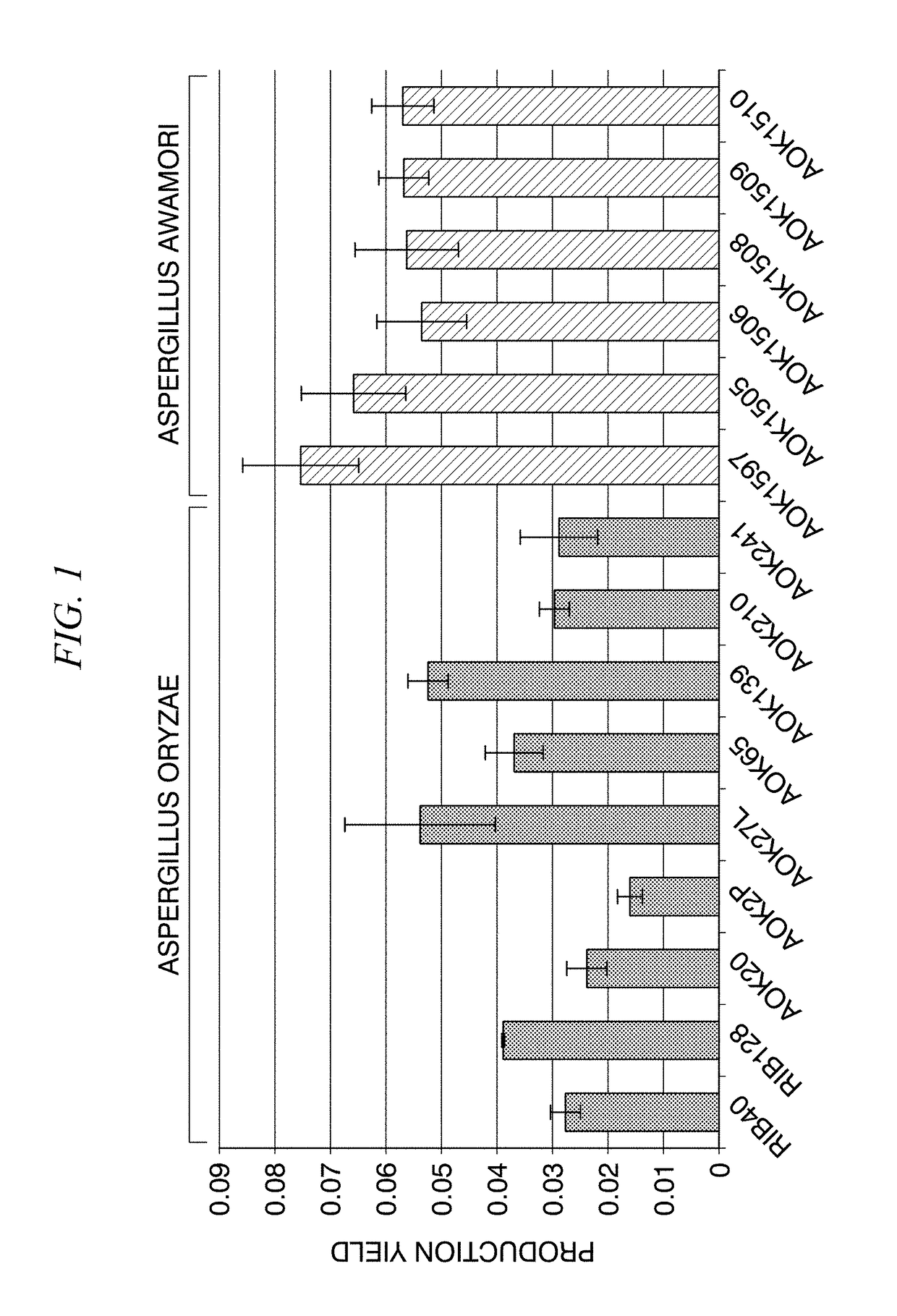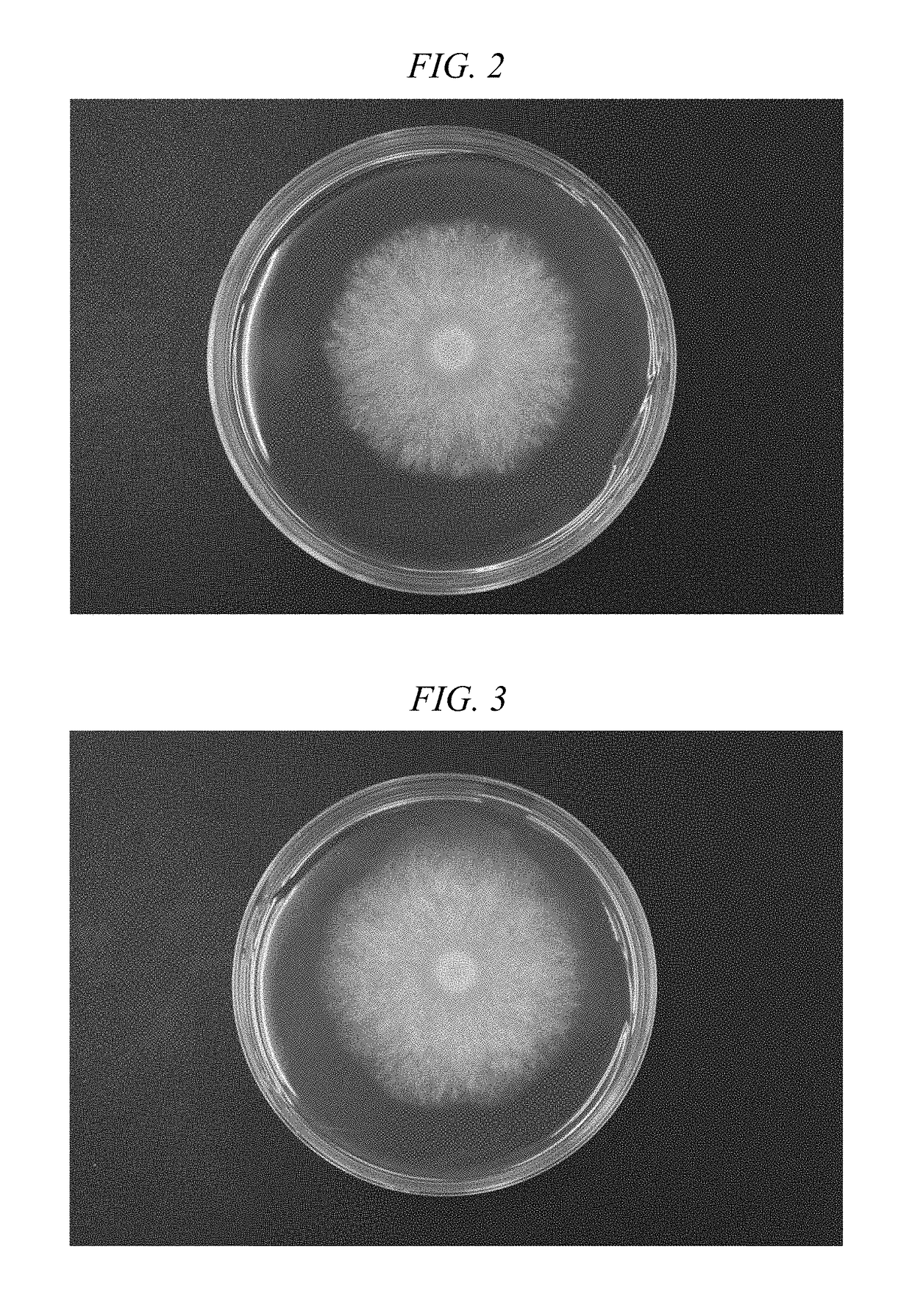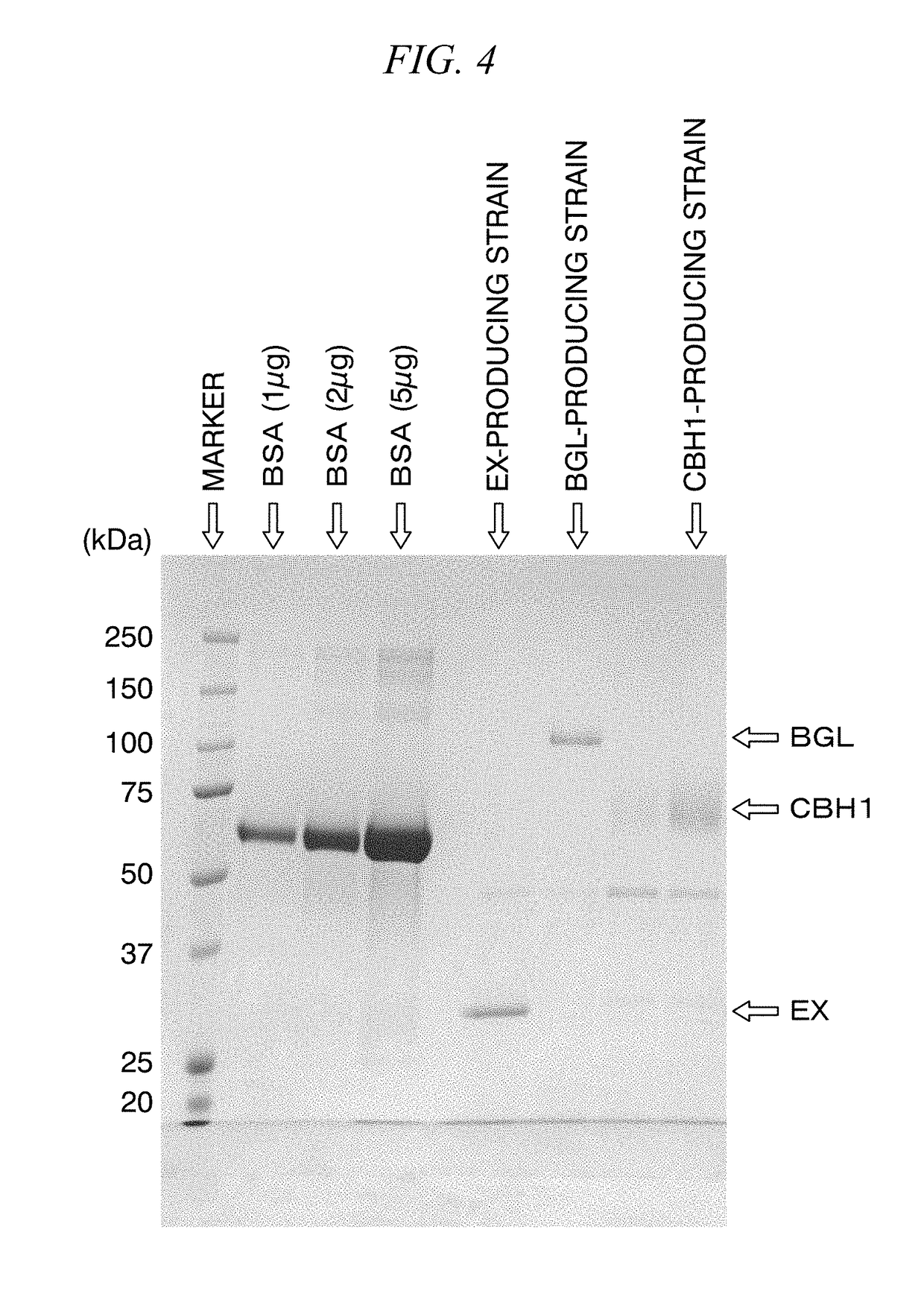Aspergillus mutant strain
- Summary
- Abstract
- Description
- Claims
- Application Information
AI Technical Summary
Benefits of technology
Problems solved by technology
Method used
Image
Examples
reference example 1
[0050]The strains of Aspergillus oryzae and Aspergillus awamori (strain RIB40, strain RIB128, strain AOK20, strain AOK2P, strain AOK27L, strain AOK65, strain AOK139, strain AOK210, strain AOK241, strain AOK1597, strain AOK1505, strain AOK1506, strain AOK1508, strain AOK1509 and strain AOK1510) (all strains were obtained from Akita Konno Co., Ltd.) were compared by calculating the enzyme production yield based on the total amount of the enzyme secreted extracellularly. Here, the term “enzyme production yield” refers to the amount of enzyme produced per the carbon source introduced, and it was calculated by the following formula.
[enzyme production yield]=[total amount of enzyme secreted] / [amount of dextrin was introduced]. Formula:
[0051]More specifically, first, rice straw was pulverized to a size so as to pass through a mesh having an opening of 3 mm, and ammonia water at a concentration of 25% by mass based on the dry weight was mixed such that the mass ratio was 1:1. By holding th...
example 1
[0058]The pyrG gene was deleted from the AOK27L strain by genetic recombination through a protoplast-PEG method to obtain an Aspergillus oryzae strain HO1 (hereinafter, may be abbreviated as the “HO1 strain”) exhibiting auxotrophy for uridine and high enzyme productivity in solid culture.
[0059]More specifically, first, by using the genomic DNA of the AOK27L strain (obtained from Akita Konno Co., Ltd.) as a template and amplifying the upstream sequence of pyrG gene (SEQ ID NO: 3) with a primer 1 (SEQ ID NO: 1) and primer 2 (SEQ ID NO: 2) and the downstream sequence of pyrG gene (SEQ ID NO: 6) with a primer 3 (SEQ ID NO: 4) and primer 4 (SEQ ID NO: 5) by PCR, respectively, followed by purification, gene fragments of the sequences upstream and downstream of the pyrG gene were obtained. A commercially available DNA polymerase (product name: KOD FX neo, manufactured by Toyobo Co., Ltd.) was used for the PCR, and a commercially available purification kit (product name: QIAquick PCR purifi...
example 2
[0065]A transformant of the HO1 strain producing each enzyme was constructed by introducing each of the cellobiohydrolase (CBH1) gene and β-glucosidase (BGL) gene of Acremonium cellulolyticus and endoxylanase (EX) gene of a fungus belonging to the genus Thermoascus to the HO1 strain prepared in Example 1.
[0066]A transformant (CBH1-producing strain) obtained by introducing the CBH1 gene derived from Acremonium cellulolyticus and the pyrG gene derived from Aspergillus oryzae into the HO1 strain was prepared in the following manner.
[0067]Each gene fragment was obtained by first amplifying, by PCR: a cellobiohydrolase (cbh1) gene (SEQ ID NO: 9) by using the genomic DNA of Acremonium cellulolyticus H1 strain as a template and using a primer 21 (SEQ ID NO: 7) and a primer 22 (SEQ ID NO: 8); an enoA promoter gene (SEQ ID NO: 12) by using the genomic DNA of the HO1 strain prepared in Example 1 as a template and a primer 23 (SEQ ID NO: 10) and a primer 24 (SEQ ID NO: 11); and a pyrG gene (SE...
PUM
| Property | Measurement | Unit |
|---|---|---|
| heat resistance | aaaaa | aaaaa |
| temperature | aaaaa | aaaaa |
| temperature | aaaaa | aaaaa |
Abstract
Description
Claims
Application Information
 Login to View More
Login to View More - R&D
- Intellectual Property
- Life Sciences
- Materials
- Tech Scout
- Unparalleled Data Quality
- Higher Quality Content
- 60% Fewer Hallucinations
Browse by: Latest US Patents, China's latest patents, Technical Efficacy Thesaurus, Application Domain, Technology Topic, Popular Technical Reports.
© 2025 PatSnap. All rights reserved.Legal|Privacy policy|Modern Slavery Act Transparency Statement|Sitemap|About US| Contact US: help@patsnap.com



